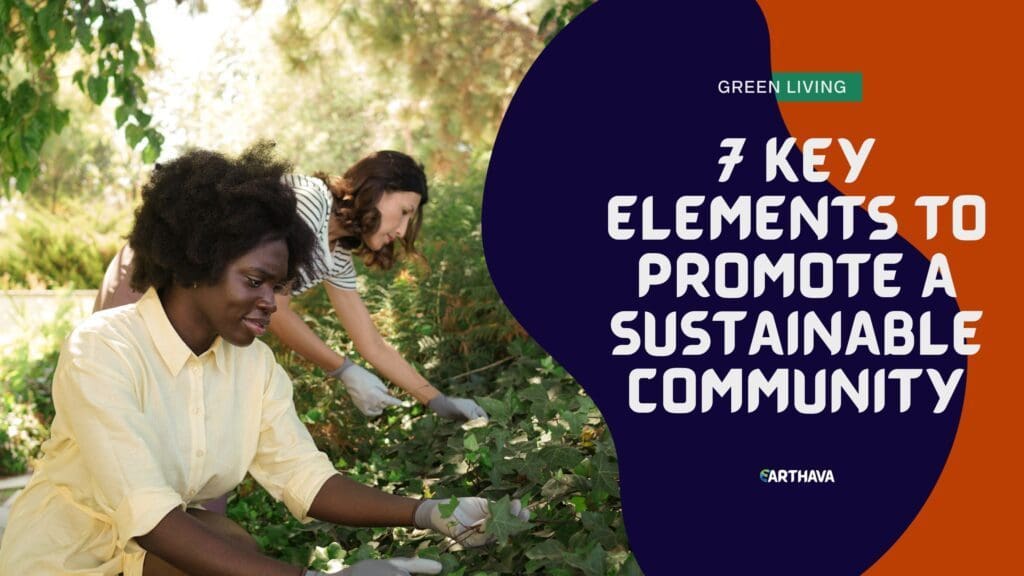When you ask today’s buyers what they look for in a home, sustainability makes the list. Today’s adults realize the importance of protecting the planet we share. But why stop with a more eco-friendly home when you can have an entire community built around conscientious living?

Building a sustainable community isn’t as hard as you think. The biggest trait you’ll need to adopt is getting back to the old spirit of a community where everyone knew their neighbors. Then, you can work together to make your community a model of environmental stewardship.
1. Walking and Biking Paths
Do you know your neighborhood walk score — the measure of how easy it is to walk or bike to nearby amenities? The more favorable your community’s walk score, the less you need to rely upon cars for transportation.
Join together with neighbors to create pathways through greenbelts and undeveloped areas to make them friendly for walkers and bikers. You can petition the city to pave such walkways to make them accessible for those in wheelchairs.
Improving walkability where you live requires a community effort. You can get involved in local zoning meetings, for example, to advocate for policies that attract more amenities nearby.
2. Public Transportation
Did you know commuting via public transportation saves 4,800 pounds of CO2 emissions per person each year? It also saves considerable money, especially if you commute to work daily.
Many locations implement bus routes to make the most of the existing infrastructure. However, technologies like light rail can speed up transit time in more population-dense areas. In smaller towns, providing parking hubs and shuttle service to nearby popular spots can cut traffic and emissions.
3. Sustainable Building Materials
New communities and those undergoing renovation do well to invest in green building materials for public areas as well as individual homes. Using flooring from companies bearing GECA or Greenguard certifications ensures indoor areas meet strict chemical emissions standards, making buildings eco-friendly and healthier. Using materials like hempcrete also increases sustainability.
Installing solar panels saves countless tons of CO2 emissions. It also makes communities more self-sustainable as many have localized grids, and individual homeowners who go solar can bid adieu to costly electric bills.
Having rooftop gardens on public buildings keeps the interior cooler in the summer with no need for air conditioning.
4. Natural Areas
If you want to cultivate ecological stewardship in your community, you need areas where people can get outside. Research indicates spending time in nature makes you more inspired to practice environmentally sustainable behaviors.
Take part in community development meetings and emphasize the importance of preserving greenbelts and maintaining parks. Advocate for more wild, open spaces to balance growth.
5. Recycling and Composting Resources
Most people want to recycle — but only if it’s convenient. One survey indicated that participants would not travel more than five miles to drop off clothing or shoes for recycling, meaning these items end up in the trash. This clogs landfills and deprives needy people of resources they could use.
Community recycling bins work. If you live in a more rural area, invest in quality bins with locking lids for your development to discourage raccoons. Installing community compost bins with clear signs as to what you can compost provides a rich fertilizer source for community gardens and decreases food waste.
6. Community Garden
Planting a community garden is a great way to get to know your neighbors and encourage sustainable living in your community. All you’ll need to do is raise interest by going door to door and locating some land.
Providing community members with individual plots encourages everyone to get involved. Plus, when everyone plants a variety of fruits and veggies they enjoy, you can barter — providing everyone with a rich, nutritious crop of organic produce that’s next-to-free!
7. Support for Local Farmers and Artisans
Shopping locally stimulates the area’s economy and puts food on your neighbors’ tables. Additionally, it helps the planet. Goods produced far away use a lot of fuel to transport, which leads to the release of more carbon emissions. Buying from local farmers keeps them from selling their land to developers who may not respect the community’s wishes for sustainability.
Making Your Community More Sustainable
Many people today list sustainability among their most desired traits when looking for a new home, so making your community more eco-friendly can increase everyone’s property values. Plus, it brings you and your community closer together and lets you sleep soundly at night, knowing you’re doing your part to protect the planet we share.


